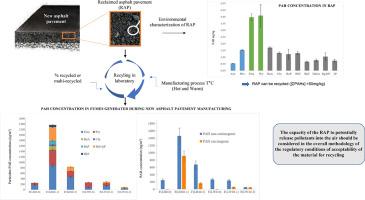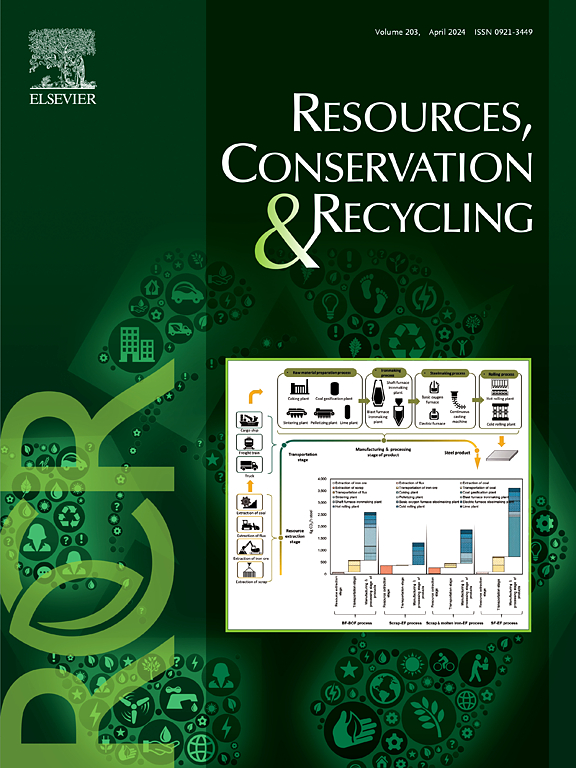Air emissions contribution to complete environmental assessment of multi-recycled road materials incorporating reclaimed bituminous pavement for a better resource management
IF 11.2
1区 环境科学与生态学
Q1 ENGINEERING, ENVIRONMENTAL
引用次数: 0
Abstract
The use of recycled materials is regulated by standards for chemical analysis of leachate and binders. This study, based on air emission contribution aims at completing the comprehensive framework for RAP acceptance in road construction. Results show that fumes studied are composed of PAH in low quantities and in variable proportions depending on the manufacturing process and the mix design. Incorporation of 40 % recycled material into hot and warm manufacturing process increases total PAH concentrations in emissions by 8 % and 26 %, respectively. In addition, the results showed that carcinogenic particulate PAH in emissions from mixes incorporating recycled materials are attributable to RAP itself, suggesting that the pavement capture organic compounds functioning as a pollution sink. Importance of integrating a specific analysis of air emissions into the overall environmental characterization with the analysis of some pollutants will opened to directing road infrastructure construction and maintenance strategies towards more sustainable industrial practices.

对包含再生沥青路面的多种再生路面材料进行全面环境评估以改善资源管理过程中的空气排放问题
沥滤液和粘结剂的化学分析标准对再生材料的使用进行了规范。本研究以空气排放贡献为基础,旨在完善道路建设中接受 RAP 的综合框架。研究结果表明,所研究的烟雾中多环芳烃的含量较低,且比例可变,具体取决于生产工艺和混合设计。在热加工和温加工过程中加入 40% 的再生材料会使排放物中的多环芳烃总浓度分别增加 8% 和 26%。此外,研究结果表明,含有回收材料的混合料排放物中的致癌微粒多环芳烃可归因于 RAP 本身,这表明路面捕获的有机化合物起到了污染汇的作用。将对空气排放的具体分析与对某些污染物的分析整合到整体环境特征分析中的重要性,将有助于引导道路基础设施建设和维护战略朝着更可持续的工业实践方向发展。
本文章由计算机程序翻译,如有差异,请以英文原文为准。
求助全文
约1分钟内获得全文
求助全文
来源期刊

Resources Conservation and Recycling
环境科学-工程:环境
CiteScore
22.90
自引率
6.10%
发文量
625
审稿时长
23 days
期刊介绍:
The journal Resources, Conservation & Recycling welcomes contributions from research, which consider sustainable management and conservation of resources. The journal prioritizes understanding the transformation processes crucial for transitioning toward more sustainable production and consumption systems. It highlights technological, economic, institutional, and policy aspects related to specific resource management practices such as conservation, recycling, and resource substitution, as well as broader strategies like improving resource productivity and restructuring production and consumption patterns.
Contributions may address regional, national, or international scales and can range from individual resources or technologies to entire sectors or systems. Authors are encouraged to explore scientific and methodological issues alongside practical, environmental, and economic implications. However, manuscripts focusing solely on laboratory experiments without discussing their broader implications will not be considered for publication in the journal.
 求助内容:
求助内容: 应助结果提醒方式:
应助结果提醒方式:


